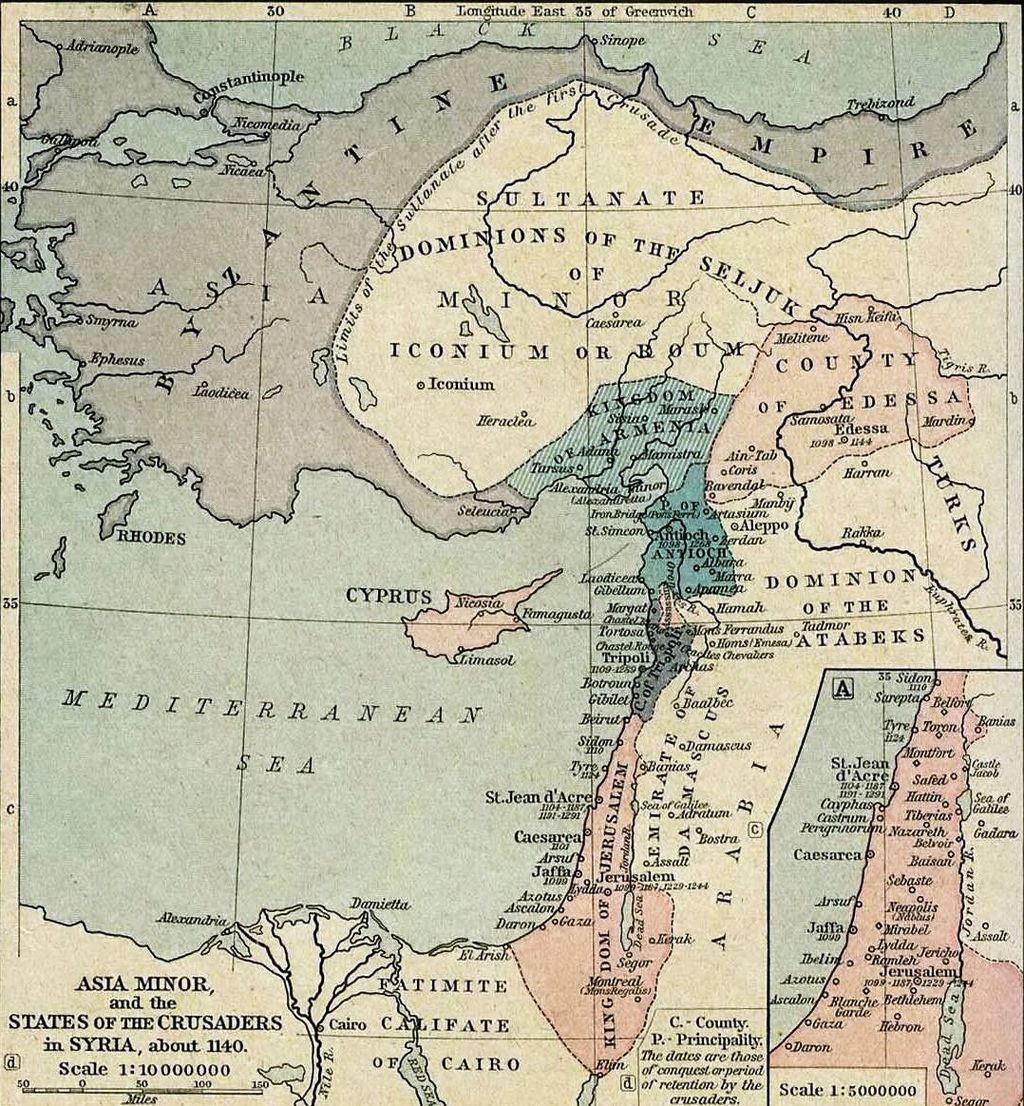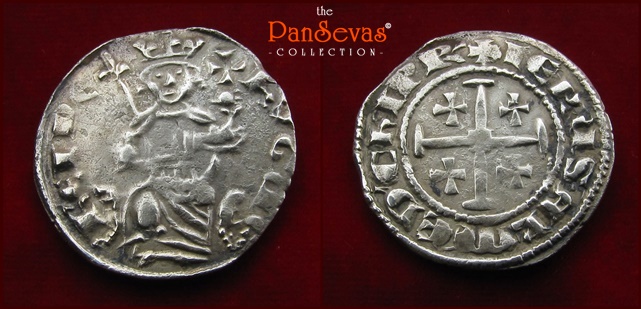The Crusader states, also known as Outremer, were a number of mostly 12th- and 13th-century feudal Christian states created by Western European crusaders in Asia Minor, Greece and the Holy Land, and during the Northern Crusades in the eastern Baltic area. The name also refers to other territorial gains (often small and short-lived) made by medieval Christendom against Muslim and pagan adversaries.
The Crusader states in the Levant were the Kingdom of Jerusalem, the Principality of Antioch, the County of Tripoli and the County of Edessa. The people of the Crusader states were generally referred to as "Latins". During the Third Crusade, the Crusaders founded the Kingdom of Cyprus.
The coins minted in Jerusalem during the 12th century show patriarchal crosses with various modifications. Coins minted under Henry I show a cross with four dots in the four quarters, but the Jerusalem cross proper appears only on a coin minted under John II. The crescent in pellet symbol is used in Crusader coins of the 12th century, and many Crusader seals and coins show a crescent and a star or blazing Sun on either side of the ruler's head or as the obverse motif.
The Crusader states in the Levant were the Kingdom of Jerusalem, the Principality of Antioch, the County of Tripoli and the County of Edessa. The people of the Crusader states were generally referred to as "Latins". During the Third Crusade, the Crusaders founded the Kingdom of Cyprus.
The coins minted in Jerusalem during the 12th century show patriarchal crosses with various modifications. Coins minted under Henry I show a cross with four dots in the four quarters, but the Jerusalem cross proper appears only on a coin minted under John II. The crescent in pellet symbol is used in Crusader coins of the 12th century, and many Crusader seals and coins show a crescent and a star or blazing Sun on either side of the ruler's head or as the obverse motif.

.jpg)
Obverse: BOAMANDVS / Helmeted bust left, crescent in front star behind
Reverse: ANTIOCHIA around cross downward crescent in 2nd quarter
Diameter:
-
Die Orientation: -
Weight: -
Die Orientation: -
Weight: -
No notes for this coin
No references provided for this coin
.jpg)
Obverse: Cross pattée in a solid ring with inscription around it. Solid ring on the rim.
Reverse: Lion of Cyprus facing left and in a ring. Inscription around it and another ring on the rim.
Diameter:
-
Die Orientation: -
Weight: -
Die Orientation: -
Weight: -
No notes for this coin
No references provided for this coin

Obverse: Hugh seated facing, holding scepter and globus; B to left.
Reverse: Jerusalem cross.
Diameter:
-
Die Orientation: -
Weight: -
Die Orientation: -
Weight: -
Lusignan Kingdom of Cyprus.
Hugh IV (1293?96 – 10 October 1359) was crowned as King of Cyprus at Saint Sophia Cathedral, Nicosia, on 15 April or 25 April 1324. In the same year, on 13 May, he was crowned at Saint Nicholas Cathedral, Famagusta as Titular King of Jerusalem (as Hugh II).
In 1344, he joined a league with Venice and the Knights Hospitaller which burnt a Turkish fleet in Smyrna and captured the city. In 1345 the allies defeated the Turks at Imbros by land and sea, but Hugh could see little benefit for his kingdom in these endeavors and withdrew from the league.
During his reign, he was strict about issues relating to justice. He was well educated and had an interest in art, literature, and philosophy and had much knowledge of Latin literature.
Hugh IV resigned the crown to his son, Peter I (rather than his grandson Hugh) in 1358, and died on 10 October 1359 in Nicosia.
Metcalf, Crusades 756; CCS 69.
